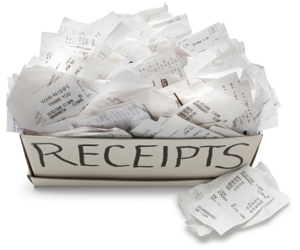For many of us, budgeting is a looming task that we have come to dread. You can’t remember how much money you spent eating out this month, the water bill was higher than usual and you went back-to-school shopping for all of the kids. Maybe you incurred some unexpected expenses when your car broke down or your kids got that nasty virus going around.
Tracking your spending doesn’t have to be this stressful chore though! You can prepare yourself for how much you will probably spend every month and build in a cushion for unexpected expenses. We’ve compiled an easy-to-follow guide for how to create and organize your monthly expenses worksheet to help you stay on top of your budget.
Worksheet Structure
For your worksheet, you want to create a column that outlines your expected budget and a column for what you actually spent during any given month. Your initial worksheet calculations might be off, but don’t worry about it. You can always adjust your budget once you start diligently tracking your monthly spending habits.
The first thing you want to do when tracking your monthly spending is divide all costs into fixed expenses and flexible expenses to be entered into your monthly expenses worksheet.
Fixed Expenses
A fixed expense is anything you pay regularly to meet your basic needs. These expenses occur every single month without fail. Rent or mortgage, life, health and car insurance all fall under this category.
Find an average amount for a bill that might have a small variance from month to month (like electricity). A copy of your last year’s annual bill will help you come up with a reasonable idea of what to expect on a monthly basis. If you can’t find last year’s bill, it might be a good idea to look into buying a scanner or start using a scanning service so all your bills are saved digitally. This is a foolproof way to ensure that all your bills and receipts are saved online.
It’s also a smart idea to include savings under fixed expenses, this way you’ll be setting some money aside every month, without fail.
Flexible Expenses
After examining your monthly fixed expenses, move on to flexible (or variable) expenses. A flexible expense is an item or activity that might not occur every month, but instead every couple of months. It can also be a spending area where you can control how much and when you spend. Groceries, meals eaten out, clothing, recreation and medical expenses are all examples of flexible expenses.
Variable cost is an area where you can compensate if you go over your budget in another area. Try skipping that extra meal out a week or carpooling to work to cut down on these expenses.
With these easy steps to creating your monthly expenses worksheet, you will always know how much you should (or more realistically – are) spending per month.
Do you have any tips you would like to share for tracking or cutting down on your expenses? We would love to hear them!
